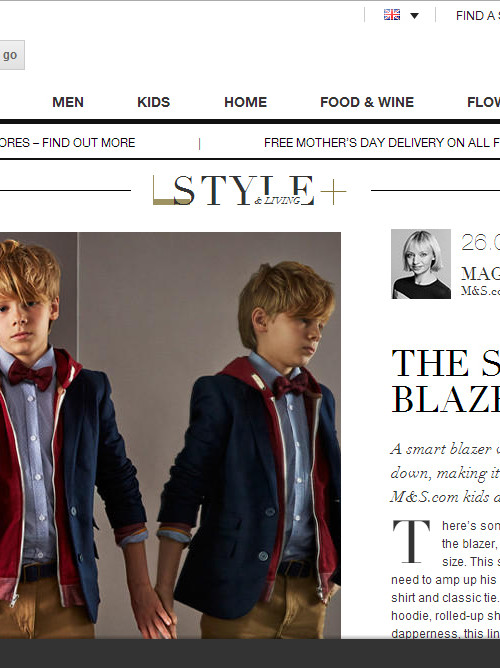The latest trend among retailers to produce editorialised content for their websites may not be simply an attempt to increase brand love through entertaining their audience. Instead, the cleverest players are using this content to help guide their customers through the decision-making process with the ultimate goal of purchase.
Increasingly, retailers are venturing into the media space; producing high-quality editorial content which provides customers with a reason to engage with their brand beyond a simple purchase. When it’s taken online, the benefits are easy to measure: longer interaction on websites, greater sharing across social media and an opportunity to move beyond the crude sales messaging which consumers have begun to tune out of. No longer are they a supplier of goods but a destination; an experience that customers can cherish.
Editorialised content is moving far beyond the sphere of customer magazines. As it begins to support – even drive – certain retailers’ websites; it will find itself much closer to the purchasing decision and in a much better place to influence it. At a single click, it’s possible to buy that dress a customer has been admiring, or the gateau one of the site’s food writers has been recommending. Focus shifts from brand immersion to oiling the purchase wheels.
If retailers are to take full advantage of the opportunities available to them through content, they must understand the full extent of the role previously held by the media. In fashion editorial particularly, rarely was it the magazine’s responsibility to entertain its readers, rather to advise them, inspire them and ensure they made credible purchase decisions.
A look to the retailers who are innovating into this space and it’s clear that they are attempting to evolve into this trusted advisor capacity; helping customers navigate their online presence in a way that goes beyond a search for long cardigans or cargo shorts.
In truth, customers rarely know exactly what they want and when presented with lots of choice, they can often get overwhelmed and fall back on a multitude of crutches to help them make decisions: what experts think, what their friends think or often simply habit. In store, this has previously been tackled by visual merchandising: a discipline of matching products by what shoppers would naturally buy together.
While this practice addresses habitual behaviour, and even to some extent the reliance on experts, recent developments have gone further, allowing shoppers to ask the advice of their friends (Karl Lagerfeld’s “selfie iPads” in fitting rooms) and consult experts (the FindSimilar For Shoes app launched this week which helps people find the perfect pair of shoes).
Earlier this year, M&S launched its long-awaited new website. Undeniably designed to mirror a magazine format; the site puts editorial content at its heart. The focus on expertise and advice is clear, from its online merchandising to its choice of staff (M&S’s new digital editor is Nicola Copping, ex deputy fashion editor at the Financial Times).
The retailer knows that a magazine format is only as good as its content and the content is only as valuable as its audience perceive it to be. Credibility is the key to changing behaviour and the undoubtedly successful ‘editors’ picks’ section proves that M&S knows it.
The ability to ignite a purchase through online content is an incredibly valuable idea, particularly for larger retailers with a strong – but perhaps tired – high street presence. As one commentator noted of the M&S site: “It removes you from the negative associations of shopping in Marks & Spencer: the dowdy image, the poor displays, the huge quantity of stock you have to work through to find something you might like. There are some very interesting and surprising pieces that look all the better outside of the stores.”
The writing is on the webpage. Content is undoubtedly the way forward; but as technology improves, the ability to use this content to drive real, sustainable results will become the point of difference for retailers in 2014.






